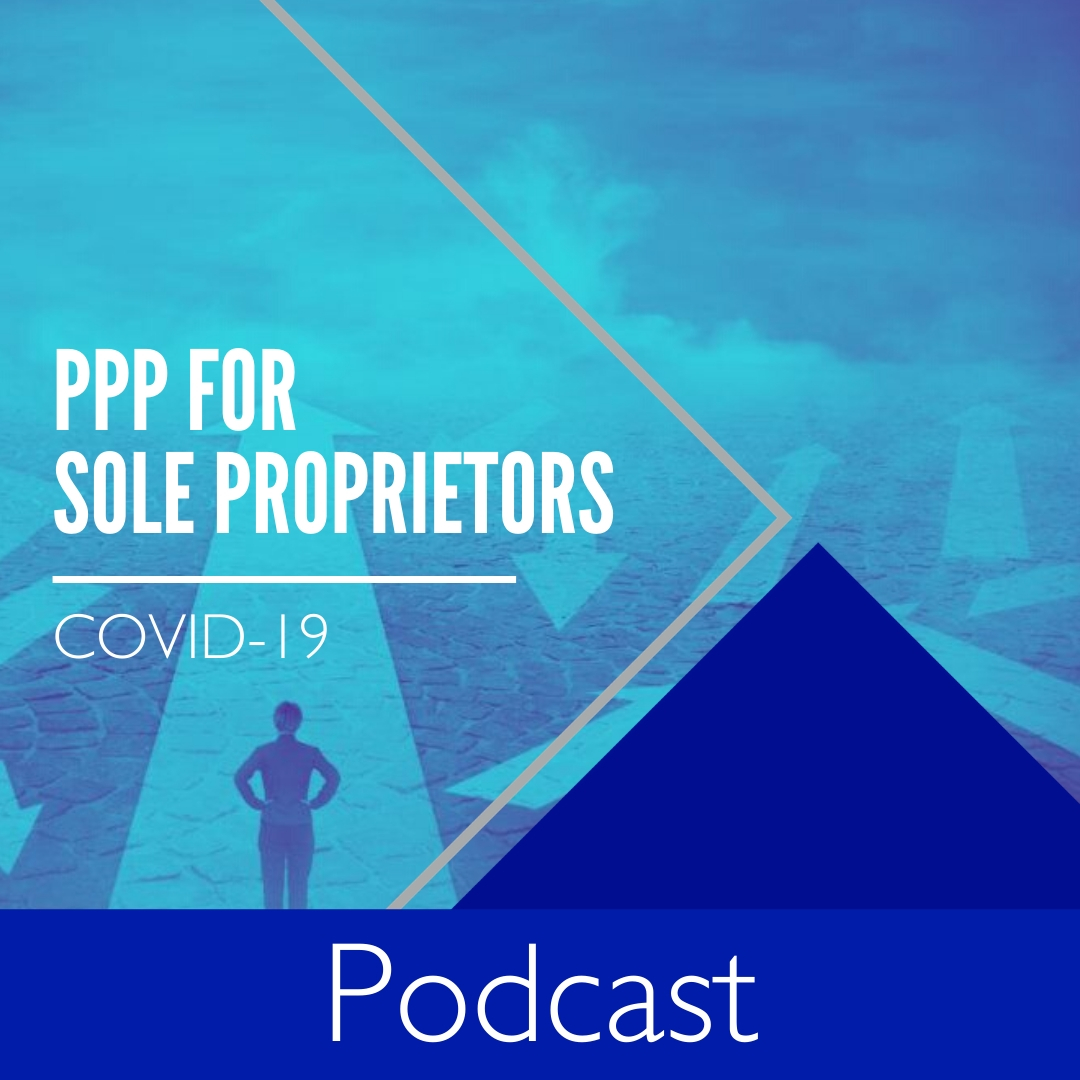We recorded this show on May 28, 2020, and things are changing daily. So this is what we know as of the time of recording.
There has been a lot of talk about the Paycheck Protection Program (PPP), and although there’s a lot of information out there, there are still many small businesses who I don’t think have even looked into the program.
You know, a lot of the small businesses do not have a CPA, banker or attorney that they regularly work with. But that’s where you come in.
Many of these businesses have these types of advisors, but you’re right; if you’re a smaller business, you may not have access to the same resources. So if, as a business, they may have heard about the program, but either they haven’t taken the time to look into it, or maybe they didn’t think it applied to them. So I think that’s what we should talk about today.
So what kind of small businesses are we referring to here?
I want to focus today on businesses that file a Schedule C on their individual tax return. So these are normally single-member LLCs or sole proprietors. Many of these small businesses don’t have payroll, or maybe they just have a few employees.
So for these businesses, for the PPP—how much of that do they qualify for?
So assuming there’s no employees, they can get a loan for up to two and one half months’ worth of their net income from their last year’s return (from their 2019 return).
But let me give you a quick example. So, if on their 2019 return it showed a business net income of $100,000 or higher, the loan that they could get is $20,833.
So here’s the math behind it. It essentially is the net income (the $100,000, which is the maximum) divided by 12 months, and then they take that monthly average and multiply it by two and a half months.
So using that same logic, if you had $50,000 worth of business income for last year, the maximum loan would be about $10,400.
And that could be a big help. So how much of that loan can be forgiven?
So here’s where the math kind of falls off the rails a little bit. We had just talked about that the loan amount is based off of two and one half months’ worth of net income, but the forgiveness is only based off of eight weeks’ worth of net income (or approximately two months). So in these cases, the entire amount of the loan probably won’t be forgiven.
So here’s the math on the forgiveness side. If you have $100,000 worth of net income like we talked about before, the forgiveness portion is about $15,300 ($100,000 income divided by 52 weeks times eight weeks gives you that $15,300 number).
So if I’m doing this right and as I’m following along with you here, that’s about $5,400 of the loan that’s not going to be forgiven?
That’s correct. If the business takes out a loan for $20,800, minus (right around the) $15,400 that they get forgiven, that gets you pretty close to the $5,400.
Good round numbers there. And I know you talked about this before, but what happens with the amount that’s not forgiven?
So a business can either pay that back immediately (and if they do that, they still receive the $15,400 benefit from this whole deal) or they can keep it and they can make monthly installments to pay it off.
Currently, it works out that it’s paid back over two years with an interest rate of one percent and the payments don’t start for six months. So it ends up being an “ok” deal for a business, even if they have to pay some of it back.
Is there anything else we need to talk about?
Yes, one last thing. So, some companies are coming to the end of their eight-week forgiveness period right now, because the loan started right around seven or eight weeks ago. And unfortunately there continues to be a ton of unanswered questions.
So for those businesses that are getting close to the end of their eight-week period, there’s nothing that says that you have to immediately file for loan forgiveness, because I think what’s going to happen is I think we’re going to see a lot more changes coming around the bend.
As a matter of fact, as we speak, the Senate and the House are kind of negotiating some changes to the PPP program that are actually going to make it probably better for employers. Some of the things that they’re doing: They’re looking to extend that eight-week period out—maybe as far as 10 weeks, 16 weeks or even 24 weeks. The other thing they’re looking to do is lowering that percentage of payroll, because currently you have to have 75 percent of your costs have to be payroll; they’re looking to change that. They’re looking at making the payback period longer than two years, and then maybe extending what the safe harbor date is, which is currently June 30, 2020, to a later date, and other things that they’re looking at.
Sign Up to Receive Email Updates
Be sure you’re getting the latest insights as legislative developments occur. We’re here for you with tax insights and business resources.
Sign Up Now
We Are Here for You
Contact us to talk through the challenges your business faces as you navigate through this unprecedented time. No doubt you’ll need help assessing cash flow and making smart projections, reviewing loan covenants, lining up bridge financing, talking to banks and lenders, figuring out staff loads and employee counts, handling disrupted supply chains, and so much more.
Read An Important Message from Our Firm





